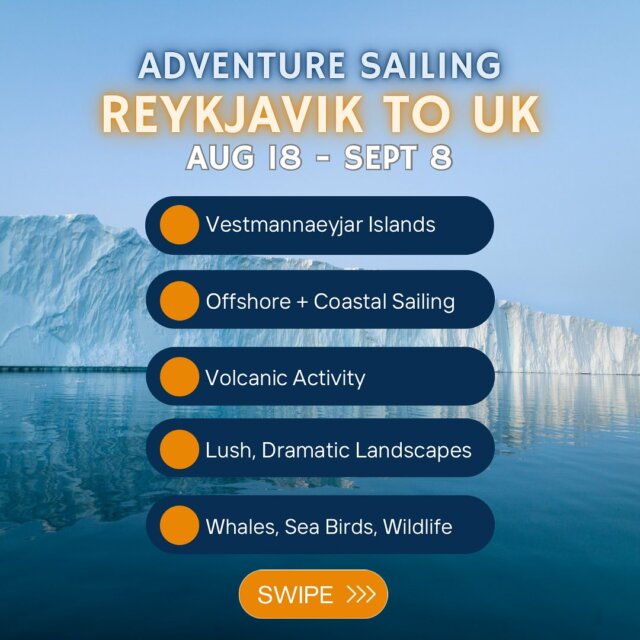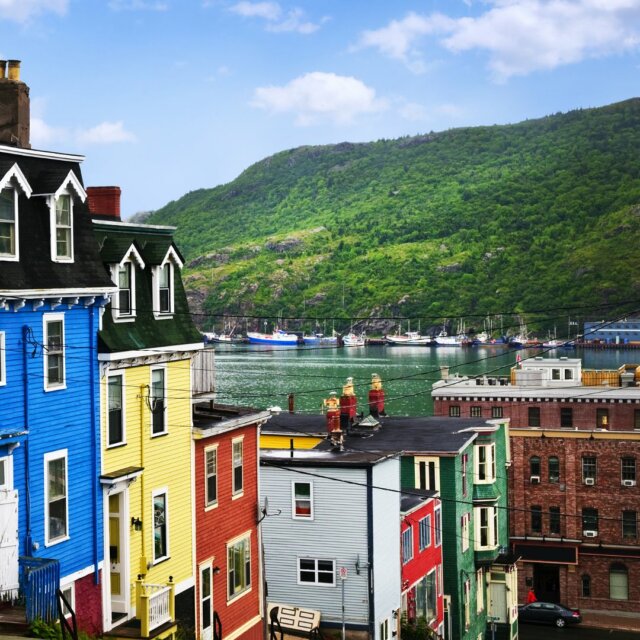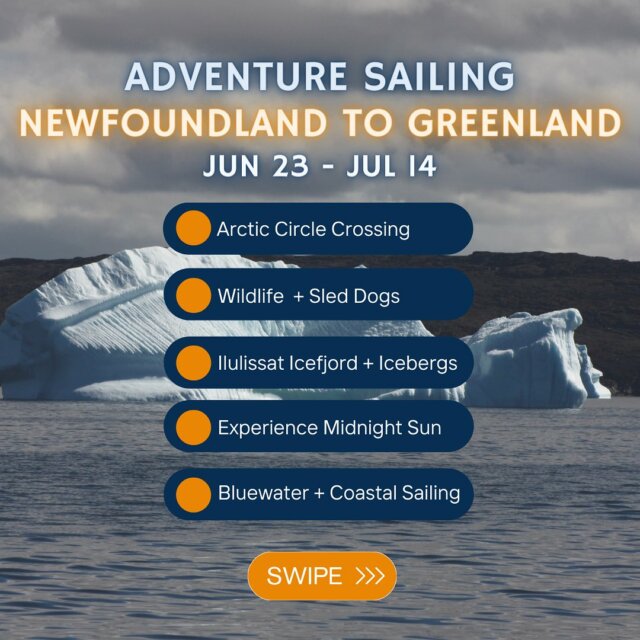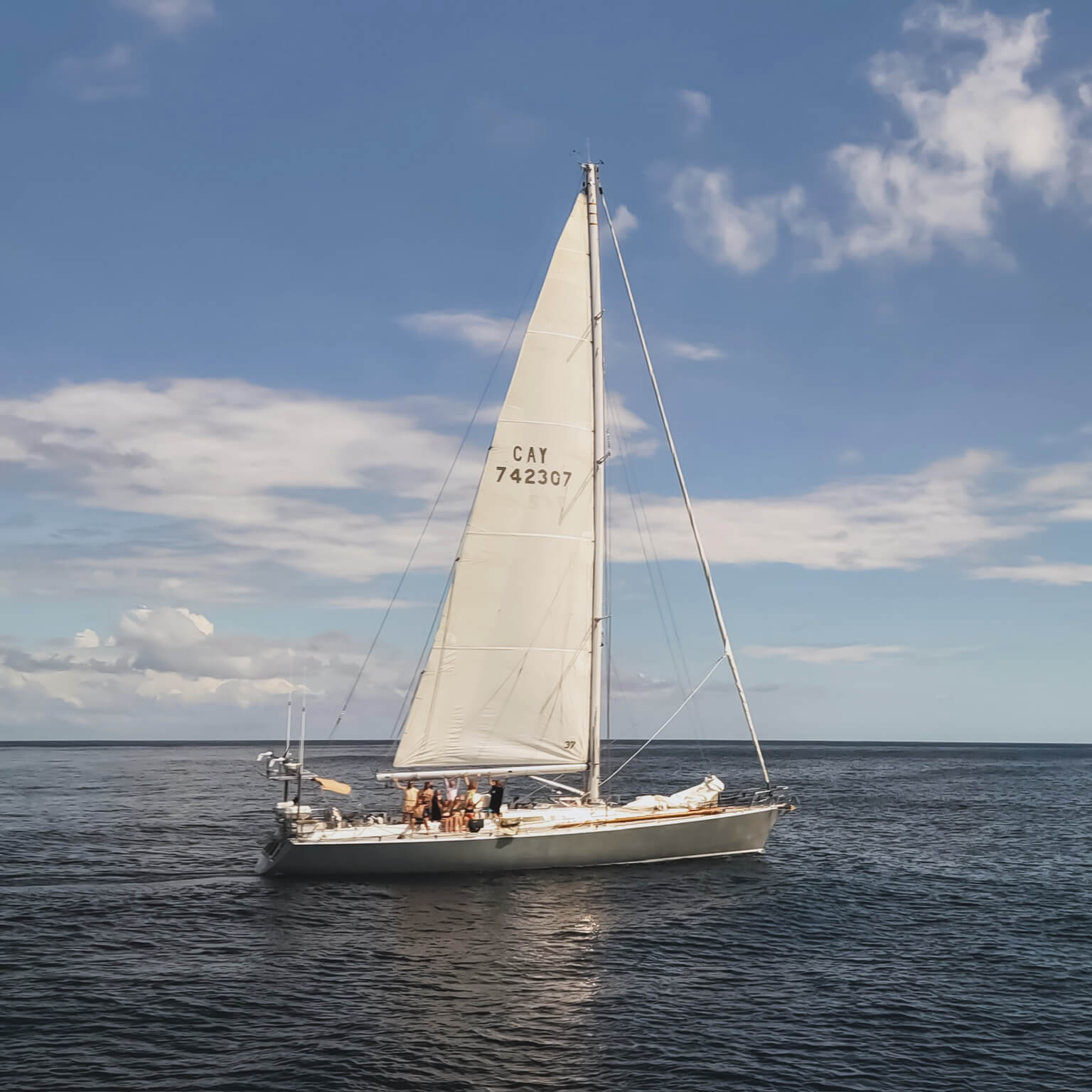After some deliberations of Magnus with KC Denmark, our Danish friends flew in with a new pump, which…showed the same problems as the old pump. Going back to their hotel after an evening work, the Danes figured out what could be wrong and came back with joyful news the next day. The pump was repaired (some software comms thing, don’t ask me) and that afternoon we set sail towards the east coast of Gotland to do our so desired sampling.
KC Denmark staff together with leg 4 crew members deploying the pump, that now functions properly again.
The next sampling location was planned somewhere in the middle of the Baltic, near Estonia. For a change, this was a ride with the wind in our backs. We made good speed and distance, and sometimes it looked more like surfing than sailing. Also this (corkscrew) movement was not altogether pleasant for some of us, but the spirits were positive and everybody enjoyed the trip. When arriving at our location, the waves were too high to be able to deploy the pump and the trawl. So, water samples were only taken with the good old bucket.
It was decided to not to do anymore offshore sampling, but instead to do one last sampling inshore in the shelter of the mainland. We arrived Friday evening after a bumpy ride (what’s new…) and indeed in the shelter we could work in quiet waters and all samples were taken.
During the remainder of the night we sailed through the Stockholm archipelago, under a starry night with lightning somewhere in the eastern Baltic, the dark rocky islands glooming in the twilight behind the buoys and lighthouses…In the morning we arrived at sunny Sandhamn where the wind had decided to tease us once more by being virtually absent…
And this was the end of the ‘Baltic Expedition 2014’ for microplastics in the Baltic Sea. I am happy and proud to have been part of this scientific expedition, onboard a sturdy sailing boat with an interesting and varied scientific crew and under the professional and pleasant guidance and care of Eric, Shanley and Megan. Although the last leg was burden with windy weather (we sailed with two and sometimes even three reefs in the mainsail, and mostly with one foresail), my guess is that the other legs have provided sufficient proper samples to state that this was a successful expedition. It proves that this kind of sampling can well be carried out from a relatively small vessel with a well-trained crew. Usual research vessels are much bigger and heavier and might seem to be more comfortable to be on with bad weather. However, also on such large vessels people become seasick above Beaufort 5 (8.0–10.7 m/s), and equipment handling is equally problematic above Beaufort 6 (10.8–13.8 m/s). It is the larger number and size of equipment (and persons) that can be carried around by these vessels that makes them profitable, but I am convinced that many pelagic (and maybe even benthic) sampling can be carried out on smaller (and less costly) vessels. I hope this expedition will find a follow-up somewhere next year when the results are available.
– Arjen Boon, Baltic Sea Discovery expedition with MTM Research Centre, August 27, 2014
This post originally appeared on the Baltic Sea Expedition 2014 blog here.






























































































